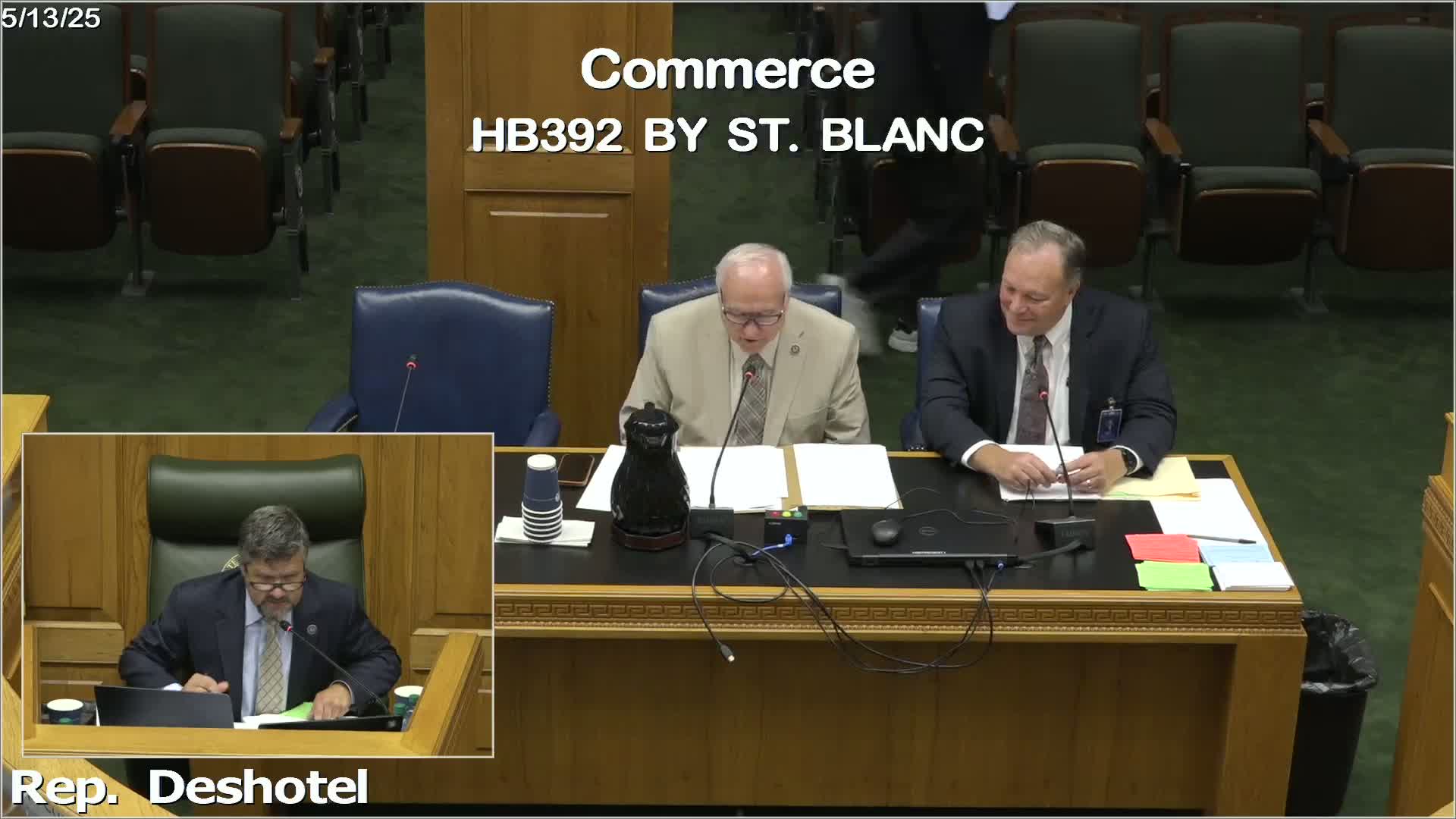Louisiana lawmakers update Dig Law to prevent underground facility damages
May 13, 2025 | Commerce, HOUSE OF REPRESENTATIVES, Committees, Legislative, Louisiana
This article was created by AI summarizing key points discussed. AI makes mistakes, so for full details and context, please refer to the video of the full meeting. Please report any errors so we can fix them. Report an error »

Louisiana lawmakers are taking significant steps to enhance the state's underground utilities damage prevention efforts with the introduction of House Bill 392. This legislation aims to build upon previous amendments to the state's dig law, addressing ongoing issues related to damage caused by the rapid deployment of broadband infrastructure.
The Dig Law Advisory Committee, an informal group comprising stakeholders from various sectors—including electric, gas, telecommunications, and construction—has been instrumental in shaping this bill. After 18 months of discussions, the committee has collaborated to propose changes that reflect the needs and concerns of all parties involved in underground utility management.
During the recent legislative meeting, Representative Saint Blom emphasized the importance of the bill, highlighting its potential to improve public safety and protect vital infrastructure. The committee has requested favorable passage of the proposed legislation, which includes several amendments aimed at refining technical definitions and clarifying procedural timelines.
One notable amendment removes the definition of "manual probing," allowing for further discussion and refinement before reintroducing it in future legislative sessions. Additionally, the bill mandates that at least one person on each excavation job site must complete Louisiana 1 Call's online safety damage prevention module, ensuring that all contractors are equipped with essential knowledge to prevent damages.
Emery Belton, chairman of the Dig Law Advisory Committee, reiterated the urgency of addressing the recent surge in damages, particularly affecting rural water systems. He noted that while some issues can be tackled through legislative changes, others may require ongoing dialogue and collaboration among stakeholders.
As Louisiana moves forward with these legislative efforts, the focus remains on enhancing safety protocols and minimizing damage to underground utilities, ultimately benefiting both the public and the various industries involved. The committee's proactive approach signals a commitment to continuous improvement in damage prevention practices across the state.
The Dig Law Advisory Committee, an informal group comprising stakeholders from various sectors—including electric, gas, telecommunications, and construction—has been instrumental in shaping this bill. After 18 months of discussions, the committee has collaborated to propose changes that reflect the needs and concerns of all parties involved in underground utility management.
During the recent legislative meeting, Representative Saint Blom emphasized the importance of the bill, highlighting its potential to improve public safety and protect vital infrastructure. The committee has requested favorable passage of the proposed legislation, which includes several amendments aimed at refining technical definitions and clarifying procedural timelines.
One notable amendment removes the definition of "manual probing," allowing for further discussion and refinement before reintroducing it in future legislative sessions. Additionally, the bill mandates that at least one person on each excavation job site must complete Louisiana 1 Call's online safety damage prevention module, ensuring that all contractors are equipped with essential knowledge to prevent damages.
Emery Belton, chairman of the Dig Law Advisory Committee, reiterated the urgency of addressing the recent surge in damages, particularly affecting rural water systems. He noted that while some issues can be tackled through legislative changes, others may require ongoing dialogue and collaboration among stakeholders.
As Louisiana moves forward with these legislative efforts, the focus remains on enhancing safety protocols and minimizing damage to underground utilities, ultimately benefiting both the public and the various industries involved. The committee's proactive approach signals a commitment to continuous improvement in damage prevention practices across the state.
View full meeting
This article is based on a recent meeting—watch the full video and explore the complete transcript for deeper insights into the discussion.
View full meeting
